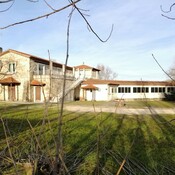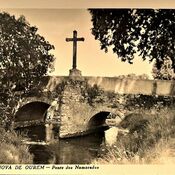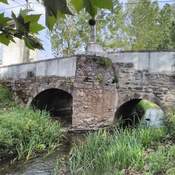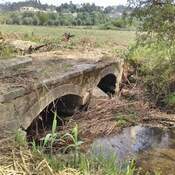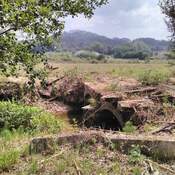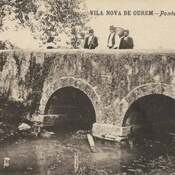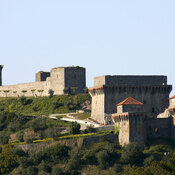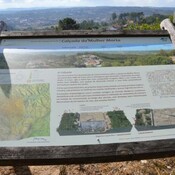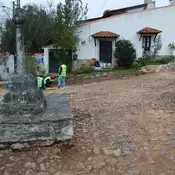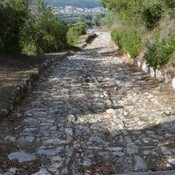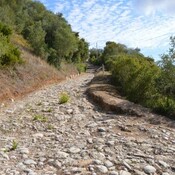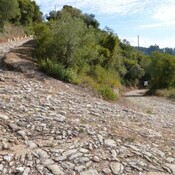Er zijn nog geen Nederlandstalige annotaties. Hier volgen annotaties in het Engels.
The remains of this Roman villa were discovered in 1972, during small excavations on private land. It is estimated that this villa dates back to the 1st century AD, that is, it existed about 2000 years ago. In these excavations, a part of a surface of mosaics of great beauty was exposed – they are polychrome mosaics, with eight colors, representing the four seasons, being decorated with geometric motifs, leaves and flowers. Building materials and common pottery were also discovered.
Not much more is known about this Roman villa than this – we do not know what kind of infrastructure existed, how big it was, and what the limits of the villa were. However, and taking into account only that set of mosaics, it is very likely that it was a villa of relative importance and its lands should have extended over a significant area of Ribeira do Olival.
Unfortunately little or nothing else has been done in that location in the sense of knowing more about what existed there. The panel of mosaics placed in the open was again covered, leaving only the photographs taken at the time. The fact has even gone unnoticed, having been poorly reported. To illustrate the lack of interest, I transcribe the news written at the time in the newspaper A Capital: “Roman mosaic discovered in Olival (Vila Nova de Ourém). In the aforementioned place, a polychrome mosaic with a characteristic plaited decoration was discovered when a ditch was being dug”… look at the size of the news item.
Testimonials from locals who witnessed it: in 1972, a small trench was dug in a piece of land to bury a dead animal (pig), when the tiled floor was discovered. The location was in the backyard of Mr. José Vieira (which no longer exists, a larger building was built, opposite the current Olival Day Centre)
The remains of this Roman villa were discovered in 1972, during small excavations on private land. It is estimated that this villa dates back to the 1st century AD, that is, it existed about 2000 years ago. In these excavations, a part of a surface of mosaics of great beauty was exposed – they are polychrome mosaics, with eight colors, representing the four seasons, being decorated with geometric motifs, leaves and flowers. Building materials and common pottery were also discovered.
Not much more is known about this Roman villa than this – we do not know what kind of infrastructure existed, how big it was, and what the limits of the villa were. However, and taking into account only that set of mosaics, it is very likely that it was a villa of relative importance and its lands should have extended over a significant area of Ribeira do Olival.
Unfortunately little or nothing else has been done in that location in the sense of knowing more about what existed there. The panel of mosaics placed in the open was again covered, leaving only the photographs taken at the time. The fact has even gone unnoticed, having been poorly reported. To illustrate the lack of interest, I transcribe the news written at the time in the newspaper A Capital: “Roman mosaic discovered in Olival (Vila Nova de Ourém). In the aforementioned place, a polychrome mosaic with a characteristic plaited decoration was discovered when a ditch was being dug”… look at the size of the news item.
Testimonials from locals who witnessed it: in 1972, a small trench was dug in a piece of land to bury a dead animal (pig), when the tiled floor was discovered. The location was in the backyard of Mr. José Vieira (which no longer exists, a larger building was built, opposite the current Olival Day Centre)


